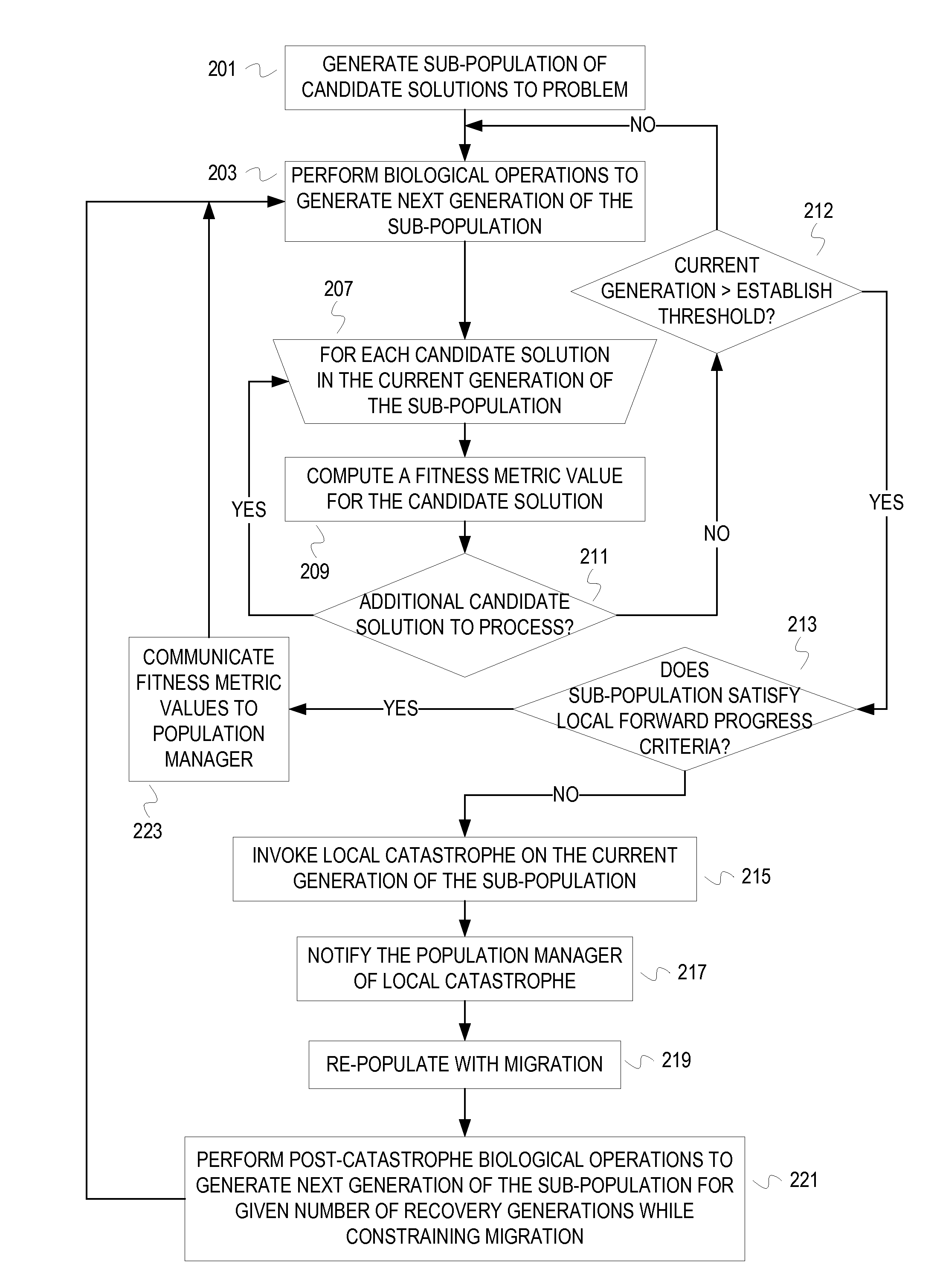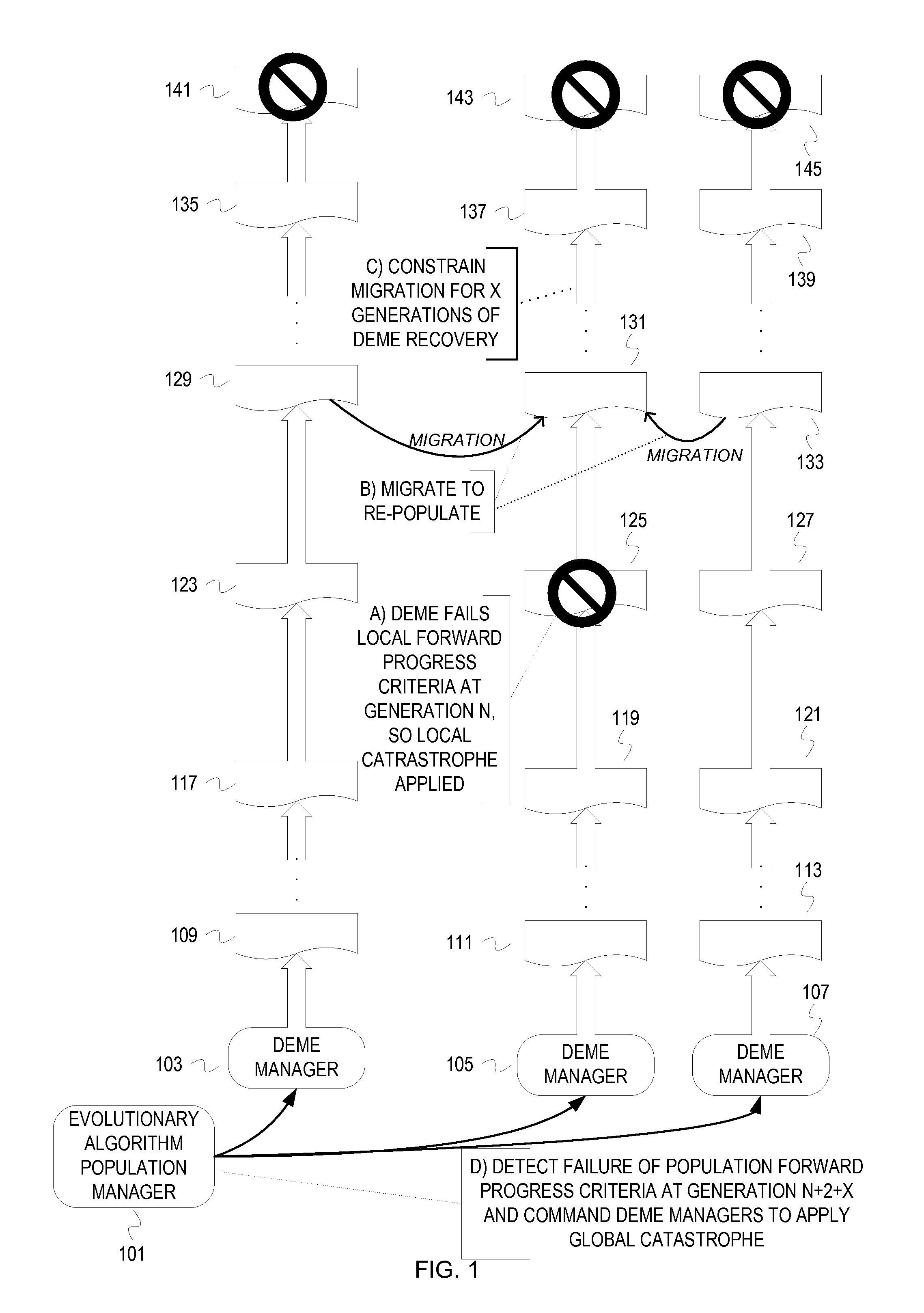Using global and local catastrophes across sub-populations in parallel evolutionary computing
a technology of global and local catastrophes and parallel evolutionary computing, applied in the field of evolutionary computing, can solve problems such as premature convergence of execution instances of evolutionary algorithms
- Summary
- Abstract
- Description
- Claims
- Application Information
AI Technical Summary
Benefits of technology
Problems solved by technology
Method used
Image
Examples
Embodiment Construction
)
[0014]The description that follows includes exemplary systems, methods, techniques, instruction sequences and computer program products that embody techniques of the present inventive subject matter. However, it is understood that the described embodiments may be practiced without these specific details. For instance, although examples refer to machines, embodiments of the inventive subject matter can be implemented in a virtualization environment. For example, sub-populations can be assigned to different virtual machines that can be supported by a single machine. As another example, sub-populations can be assigned to different cores in a multi-core environment. In other instances, well-known instruction instances, protocols, structures and techniques have not been shown in detail in order not to obfuscate the description.
[0015]Literature about evolutionary computing uses a large variety of terminology. In some cases, terms are used ambiguously. Genetic algorithm literature sometim...
PUM
 Login to View More
Login to View More Abstract
Description
Claims
Application Information
 Login to View More
Login to View More - R&D
- Intellectual Property
- Life Sciences
- Materials
- Tech Scout
- Unparalleled Data Quality
- Higher Quality Content
- 60% Fewer Hallucinations
Browse by: Latest US Patents, China's latest patents, Technical Efficacy Thesaurus, Application Domain, Technology Topic, Popular Technical Reports.
© 2025 PatSnap. All rights reserved.Legal|Privacy policy|Modern Slavery Act Transparency Statement|Sitemap|About US| Contact US: help@patsnap.com



